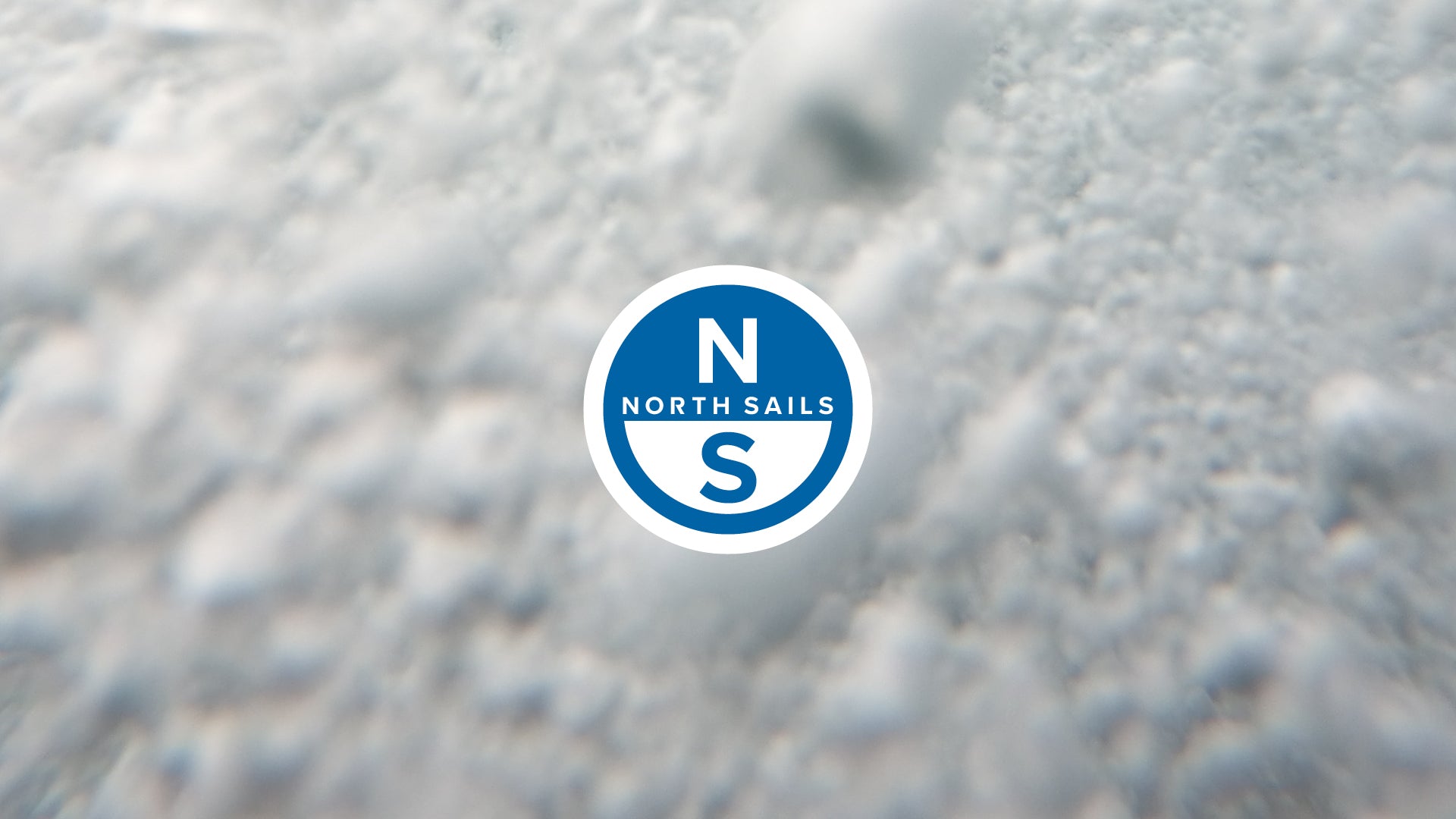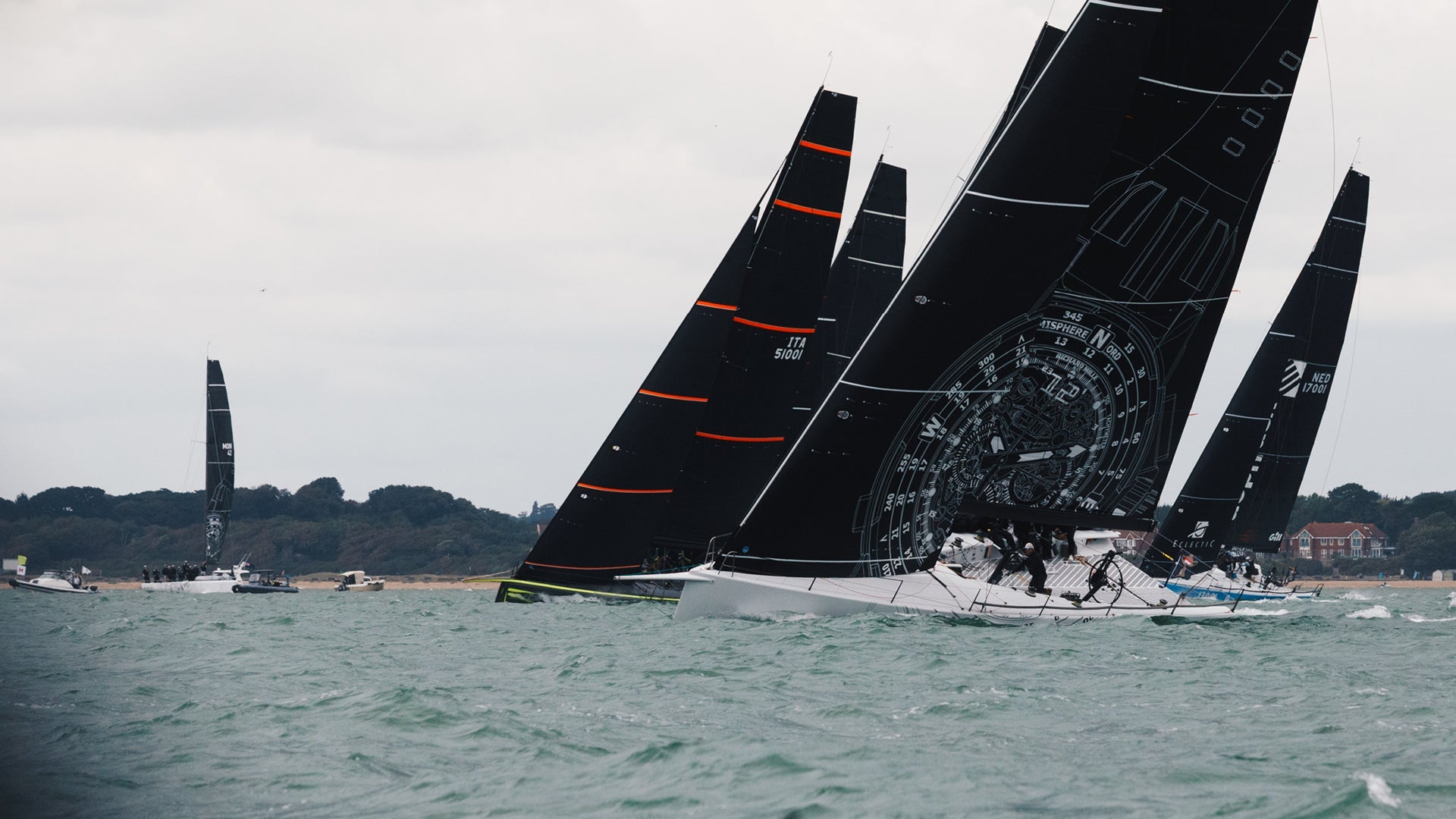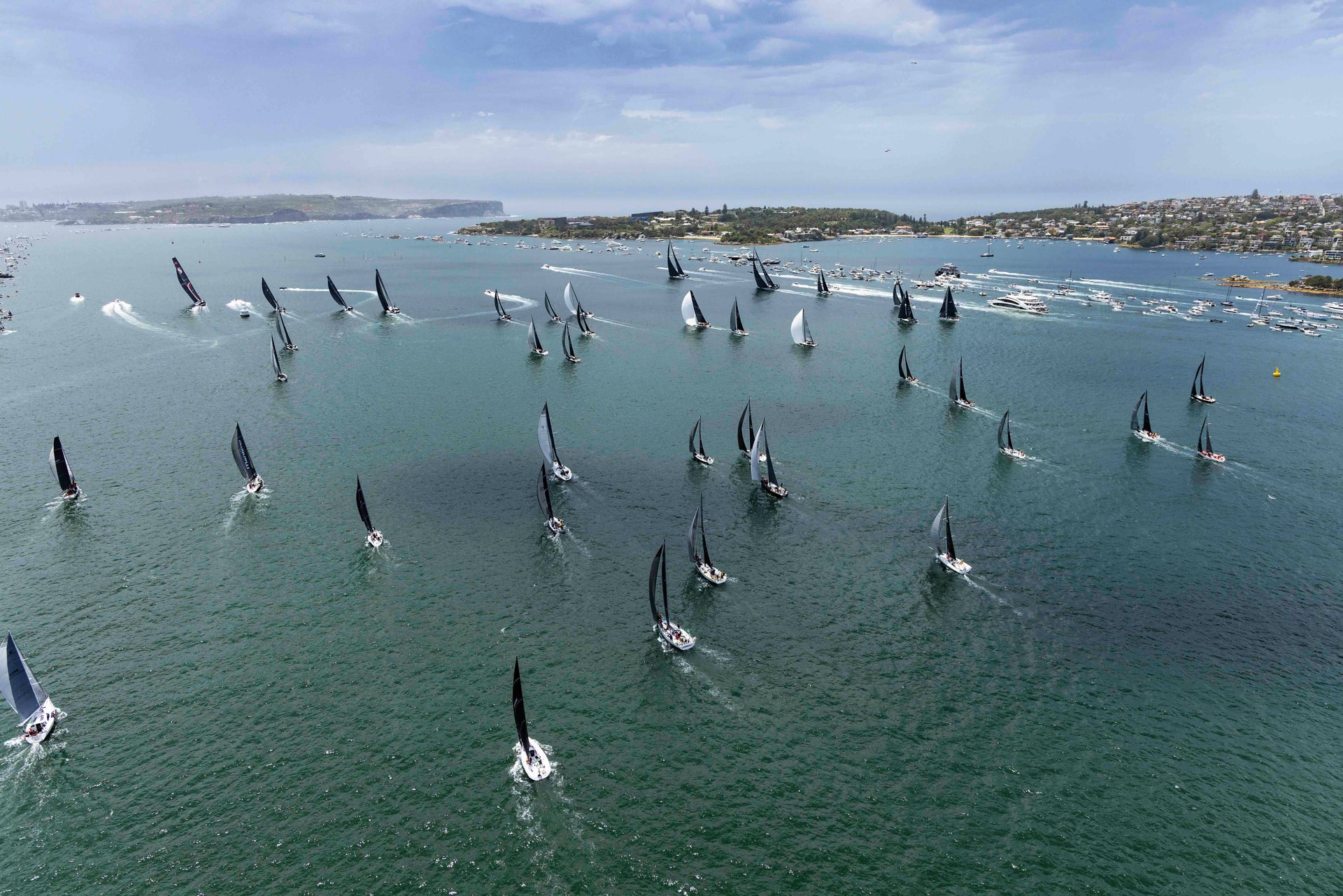DRAGON TUNING GUIDE
The purpose of this tuning guide is to give our clients in the Dragon class some guidelines on how to get the most out of their North sails. The tuning-guide was compiled by Jørgen Schönherr, Poul Richard Høj Jensen and Theis Palm.
Always experiment and try finding your own trim using these guidelines. The weight of the crew, the balance of the boat and the stiffness of the mast, together with specific local wind and sea conditions all have influence on the fastest and final trim.
MAST TRIM
Before stepping the mast in the boat, some very important measurements have to be checked to follow this tuning guide correctly:
1. Lead the upper shrouds and forestay along the mast, the uppers have to be outside of the spreader tips. Pull them as hard as you can and put a mark on all three wires at the top at the black band on the mast (it is 80 cm above deck level). These three marks are now used to check if the mast is straight from side to side in the boat, and to check the mast rake.
2. All measurements for the mast position is made from station 4, (you find station 4 between the forestay and the mast) which is marked on both port and starboard side of the hull with a dot. Draw a line in between the points. From the middle of this line to the front end of the mast (without spinnaker pole track) See the distance in the ‘on the water’ tuning guide below.
3. The mast rake is set by first fixing the forestay on the deck 1,86 cm from the front side of the mast. (This is the max. distance allowed in the class – rules). Then measure the distance from the black mark on the forestay to the deck (along the forestay). See the distance in the on teh water tuning guide below.
4. The upper shrouds proper position is located by measuring perpendicularly from the line on station 4 to where the shroud enters the deck. See the distance in the on the water tuning guide below. For light crews (220-240 kg) we recommend to leave the shrouds one hole forward.
5. The lower shrouds are placed in the hole just behind the top shrouds (approx. 3 cm), so that they don’t hold the mast back when going downwind.
6. The marks on the top shrouds (from step 1) are now used to control if the mast is placed in the middle of the boat. This is done best by measuring the distance from the mark to the deck. This should be the same on both sides. It is very important, that the mast is straight from side to side and not being distorted at deck level.
7. Setting up forestay tension, put the mast in strong wind position (tension 20 on the uppers and 8 on lowers). Next, put the tension gauge on the forestay around the black mark. Pull runners until the gauge reads 30. Make tape on runner exit above deck. Do the same on the other side. Now both runners have the same tension on the mark set-up. When you ease the runners until the forestay is just tight, the tape mark will be 15 cm above the deck as the uppers are both the same length.
8. The jumpers are adjusted by pulling the permanent backstay. Look up along the sail track and check that the jumpers are equally tight on both sides. If this is not the case, they should be adjusted till the mast is completely straight.
9. For all rig tension measurements we have used a Loose Gauge PT-2M. To get a more precise reading, cut the plastic of the upper shroud about 1.2 m above deck. You find all setting in the chart below.
10. The lower shrouds are tensioned, so that the mast is completely straight in the boat up to 20-22 knots. From here on, tighten them till the mast drops 5-10 cm off to leeward where the forestay meets the mast – the exact measurement is dependent on crew weight.
ON THE WATER TUNING GUIDE
| Wind |
Light – 0-5 knots |
Medium – 6-16 knots |
Heavy – 17+ knots |
Comments |
| Sail Inventory |
Mainsail A-7+ for Std. Petti & BB Mainsail LM-2 for stiff Petti mast Genoa MG-15 / MJ-8 Spinnaker CD-5 or R-5 |
Mainsail A-7+ for Std. Petti & BB Mainsail LM-2 for stiff Petti mast Genoa MG-15 / MJ-8 Spinnaker CD-5 or R-5 |
Mainsail A-7+ for Std. Petti & BB Mainsail A-10 for stiff Petti mast Genoa HG-15 / MJ-8H Spinnaker CD-5 or R-5 |
The sea conditions and waves can change the wind range in the sail inventory |
| Mast Rake | 123,5 cm (Petticrow) 120,0 cm (BB) |
122,5 cm (Petticrow) 120,0 cm (BB) |
122,5 cm (Petticrow) 120,0 cm (BB) |
Measure 80cm up from deck, transfer mark at mast to the forestay. Measure along the forestay to deck level |
| Mast Ram |
Mast 1,5 cm forward at deck level | Mast neutral | Mast 2,5 cm forward at deck level | If you struggle with pointing, pull the mast back |
| Mast Position | 83,0 cm (Petticrow) 81,5 cm (BB) |
83,0 cm (Petticrow) 81,5 cm (BB) |
83,0 cm (Petticrow) 81,5 cm (BB) |
Mast position at deck level is taken from station 4 |
| Jumpers (adjustable) Jumpers (fixed) |
Loose
Loos gauge tension 6 |
Mast straight
Loos gauge tension 6 |
Mast straight
Loos gauge tension 6 |
Make sure the mast is straight from side to side |
| Upper Shrouds | Loose gauge tension 14 for Std. Petti & BB and 12 for stiff Petti mast minus 1 turn |
Loose gauge tension 14 for Std. Petti & BB and 12 for stiff Petti mast plus 1-2 turns |
Loose gauge tension 14 for Std. Petti & BB and 12 for stiff Petti mast plus 3 turns |
Tension is taken without plastic. Shroud position from station 4. is 83 cm all time, for light crew 80 cm |
| Lower Shrouds |
Let the mast bend 1 cm to leeward at spreader level |
Mast straight | Mast straight plus 1-1½ turn so the mast bends to windward |
When you set the mast straight, look up at the sail groove |
| Backstay | Little tension in the very light | Just tight to prevent the mast top from moving in waves | Just tight to prevent the mast top from moving in waves | Little tension in the very light to pre-bend the mast |
| Runners | Slack to 15 -16 cm above deck Mark # 4 |
From 15 – 5 cm above deck Mark # 3 – # 2 |
From 5 – 0 cm this is maximum Mark # 1 |
Mark # 1 (tape) runners at through deck level such that the forestay reads 30 on the Loos gauge. This is the maximum runner setting |
| Mainsail | Light sheeting; upper teltales flying straight back |
Sheet until the top batten is parallel with the boom; upper telltales 20% on leeward side |
Sheet until the main is flying nicely, the top batten is 2 degrees twisted to leeward, telltales are flying straight back | If you struggle with pointing, you must pull the sheet harder, but check the mast ram first |
| Main Traveller |
To windward; boom on middle | To windward; boom on middle | On the middle and up to 10 cm to leeward | The boat has to be light on the helm |
| Outhaul | 2,0cm from black band | 1cm from black band | All the way out to black band | The sail has to be flat along the boom in heavy wind |
| Cunningham | Loose | Loose – just remove wrinkles along luff |
Just remove wrinkles along the luff | In very heavy winds, you can pull hard to move draft forward |
| Boomvang | Loose Make sure it is cleated for the run |
Loose Make sure it is cleated for the run |
Loose Make sure it is cleated for the run |
On the reach and run pull so the top batten is parallel to the boom |
| Genoa Sheet |
Pull so the foot just touches the shroud at deck level |
Pull until the foot is touching 10 cm up at shrouds |
Pull until the foot is touching 25 cm up at shrouds |
|
| Genoa Barberhaul |
Mark #4 / 15 cm out of cuddy 15-18 cm from the spreader |
Mark #2 / 9 – 10 cm out of cuddy 5 cm from the spreader |
Mark #3 / 10 – 12 cm out of cuddy 8 cm from the spreader |
|
| Genoa Halyard |
Small wrinkles along the luff | Just remove wrinkles along the luff |
Just remove wrinkles along the luff |
Make sure that the luff is NOT overstretched |





